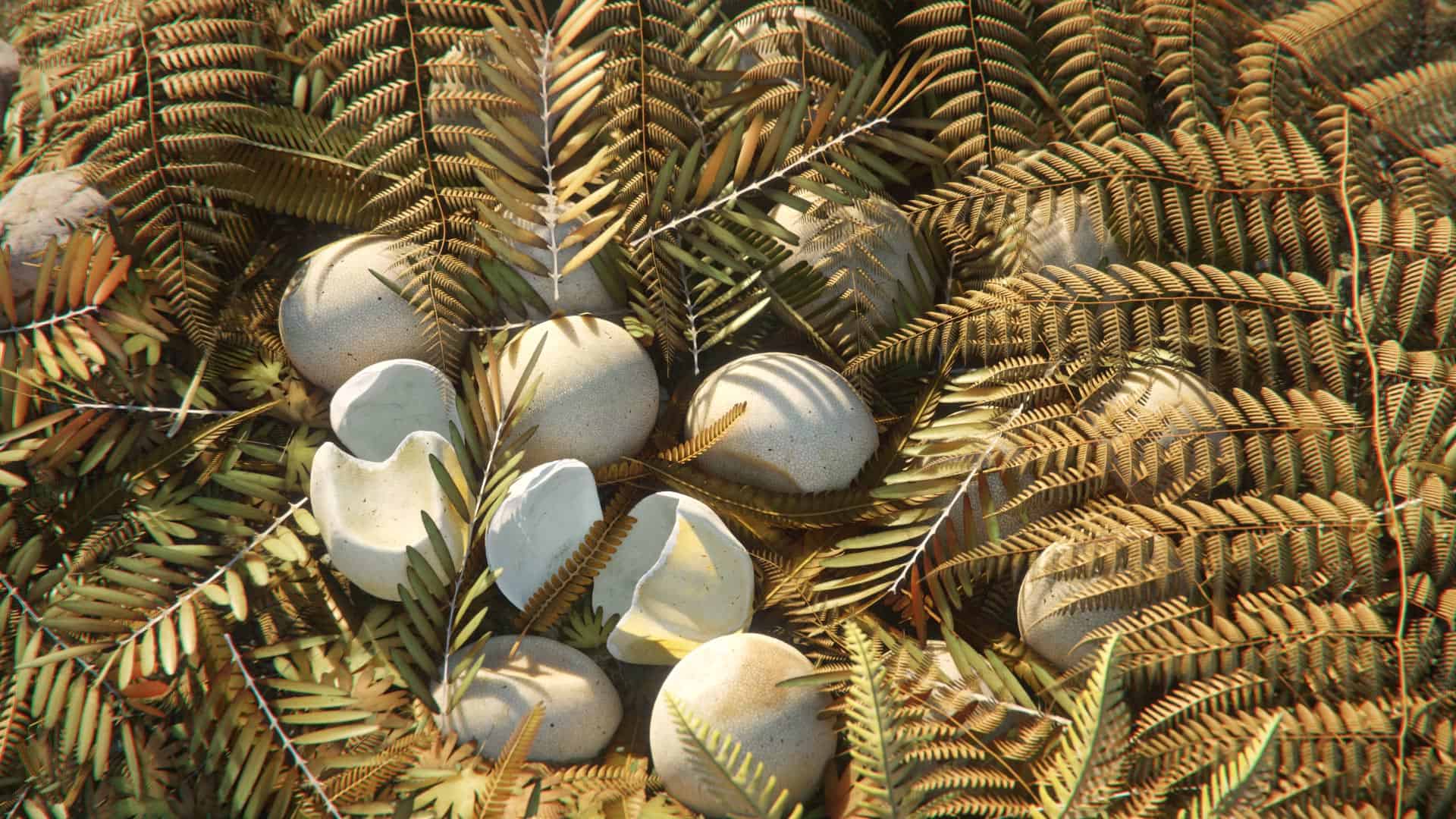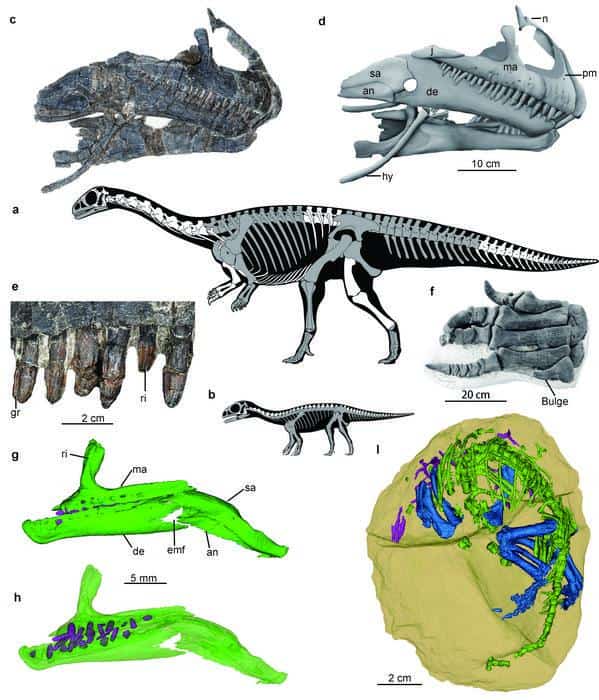
Whether a Triceratops, a Tyrannosaurus, or a Stegosaurus, virtually every dinosaur emerged out of an externally laid egg. But eggs are fragile and don’t fossilize that well. So paleontologists still know very little about how dinosaurs laid their eggs or what the eggs looked like.
A new study is now transforming our understanding of dinosaur reproduction. The research shows that the earliest dinosaur eggs may have had leathery shells, similar to today’s turtle eggs. This is a striking contrast to the hard shells we associate with modern lizards and birds.
Early dinosaur eggs: Neither soft nor hard
The insight came after the unearthing of Qianlong shouhu, a newly identified sauropodomorph species from the Early Jurassic period (~200 million years ago) in Guizhou, China. Sauropodomorphs were a group of long-necked, herbivorous dinosaurs that included both the smaller, bipedal precursors and the larger, quadrupedal sauropods like Brachiosaurus and Diplodocus. These were medium-sized dinosaurs, measuring roughly six meters (20 feet) in length and weighing about a ton.
The site yielded three adult skeletons and five nests of eggs, possibly the oldest known association of dinosaurs with their offspring. The fossils suggest that the dinosaurs underwent significant changes from birth to adulthood. These changes include variations in skull length and teeth arrangement.

“Allometric analyses of limb ratios between the adult and embryonic specimens indicate that adult Qianlong shouhu was able to walk on its hindlimbs, but the babies were likely quadrupedal,” said Fenglu Han, a China University of Geosciences paleontologist.
Digging deep into eggs
Using histological thin-sectioning and electron microscopy, the researchers at the Institute of Vertebrate Paleontology and Paleoanthropology (IVPP) and the Chinese Academy of Sciences (CAS) examined the eggshells’ microstructure. They found that the shells were thicker than typical soft-shelled eggs but thinner than hard-shelled eggs, indicating a leathery texture.
“Our results show that Qianlong shouhu possessed eggshell microstructures similar to other Cretaceous dinosaur egg fossils, which likely consisted of two layers — the mammillary layer and continuous layer — and had fully developed eggshell units,” the researchers said.
“The comparison of eggshell fragmentation among different eggshell types also suggests that the eggshell surface of Qianlong shouhu featured small fragments, similar to a leathery eggshell, in contrast with the folded surface of soft-shelled eggs or the large-fragmented surface of hard-shelled eggs.”
The study, which appeared this week in the National Science Review, went beyond examining Qianlong shouhu. By analyzing over 200 fossil and living reptile species, the researchers traced egg evolution through major reptilian groups. They observed a decrease in relative egg size from early reptiles to dinosaurs, followed by an increase in birds. Similarly, eggshell thickness fluctuated, decreasing initially, and then increasing among theropods. However, the familiar egg shape remained relatively consistent throughout this evolutionary timeline.
Previously, researchers at Yale University reached similar findings. They analyzed embryo-bearing egg fossils ascribed to the dinosaurs Protoceratops and Mussaurus, showing these early dinosaurs laid soft, leathery shells. Hard, calcified eggshells evolved much later and independently for each main branch of dinosaurs.









